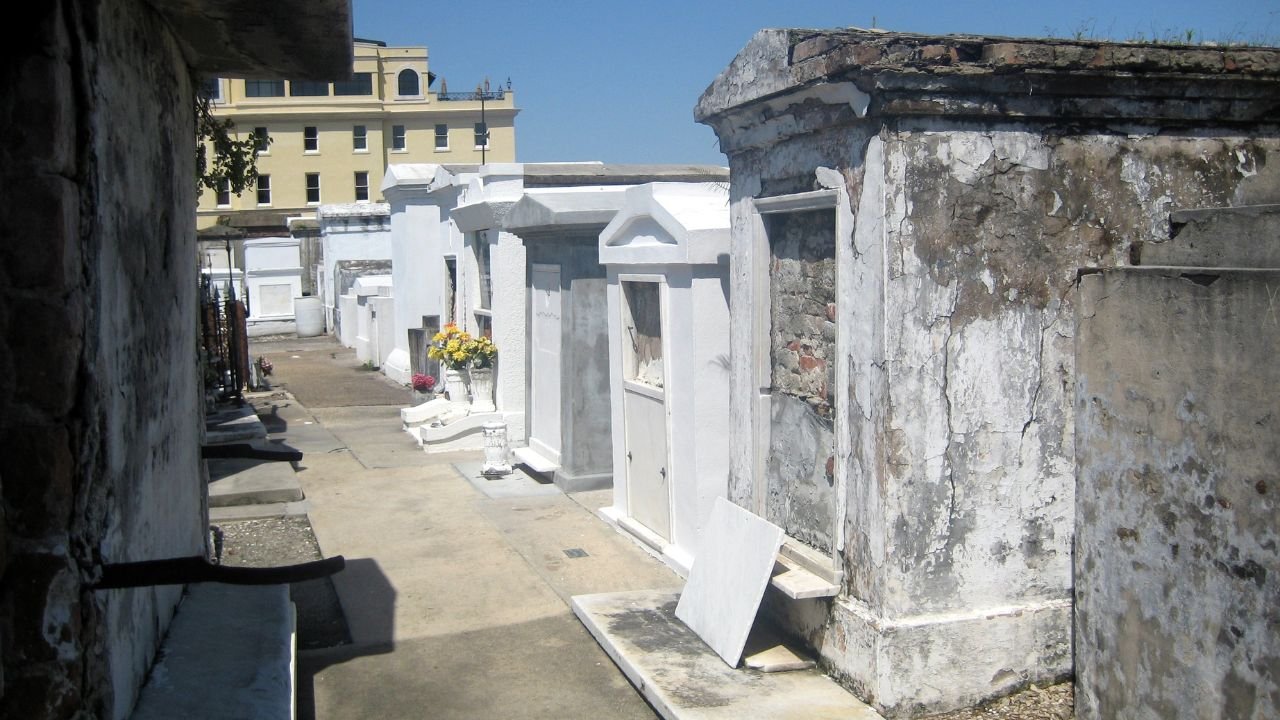Why Are New Orleans Cemeteries Dangerous? When you think of New Orleans, your mind probably jumps to the colorful chaos of Mardi Gras, the soul-stirring rhythm of jazz, or the sweet smell of powdered beignets wafting through the air. But there’s another side of the Crescent City that pulls in curious travelers, history lovers, and ghost hunters alike—its historic cemeteries.
These hauntingly beautiful graveyards, filled with elaborate tombs and legends of the supernatural, are often called “Cities of the Dead.” They’re cultural landmarks that reflect centuries of architecture, religion, and tradition. But despite their allure, they can also be surprisingly dangerous.
In this post, you’ll discover why these cemeteries pose real risks—not just spiritual, but physical and environmental. Whether you’re planning to visit or just love a good urban mystery, knowing the truth behind these dangers can turn your curiosity into awareness and appreciation.
Contents
- 1 The Unique Nature of New Orleans Cemeteries
- 2 1. Crumbling Tombs and Structural Hazards
- 3 2. Flooding and Contamination Risks
- 4 3. Psychological Effects and Paranormal Encounters
- 5 4. Crime and Safety Concerns
- 6 5. Natural Threats: Heat, Bugs, and Wildlife
- 7 Tips to Stay Safe While Visiting
- 8 Famous Cemeteries With Known Risks
- 9 FAQs About New Orleans Cemeteries
- 10 Final Thoughts: Why Are New Orleans Cemeteries Dangerous To Humans?
The Unique Nature of New Orleans Cemeteries
First, let’s talk about why New Orleans cemeteries look so different from most others in the United States. The city was built on swampy, low-lying land—some of it even below sea level. Because of this, traditional underground burials were never a great idea. Graves would often fill with water or even cause coffins to rise up during heavy rains.
To solve this problem, New Orleans residents began building above-ground tombs, often in the style of Spanish and French burial traditions. These tombs are essentially small mausoleums made of stone, brick, or plaster. Over time, they created entire labyrinths of vaults that resemble miniature neighborhoods—hence the name “Cities of the Dead.”
But with that beauty comes fragility, and time hasn’t been kind to many of these resting places.
1. Crumbling Tombs and Structural Hazards
You might think a stone tomb is sturdy and permanent, but many are crumbling after decades—or even centuries—of weather, flooding, and neglect. Some tombs date back to the 1700s and haven’t seen repairs in years.
Walking too close to them can be risky. Loose bricks, cracked plaster, and unsteady ledges make it easy to:
- Trip or twist your ankle
- Have a piece of stone fall near you—or on you
- Accidentally collapse part of a structure by leaning or touching it
Even popular cemeteries like St. Louis Cemetery No. 1 require visitors to join a guided tour—not just to preserve the site but to keep you safe. Tombs can fall apart without warning, especially during or after rainy weather.
Pro tip: Never sit, lean, or climb on a tomb—even if it looks solid. It might be far more fragile than it appears.
2. Flooding and Contamination Risks
Flooding is a constant threat in New Orleans, and cemeteries are not immune. When a storm hits—or when water levels rise—the tombs can be partially submerged. This leads to several serious issues:
- Displacement of remains: In some cases, bones and caskets have been known to float or wash out of vaults.
- Soil and surface contamination: Floodwaters may carry waste, bacteria, and bodily remains across the cemetery grounds.
- Long-term hazards: Even after the water recedes, residue from sewage, mold, or decaying materials can remain on surfaces you might touch unknowingly.
Older cemeteries often lack modern drainage systems, so rain can turn walkways into puddles and crypts into open hazards.
Pro tip: Wear waterproof shoes and avoid visiting right after a heavy storm.
3. Psychological Effects and Paranormal Encounters
If you’ve ever felt a chill in the air or a sense of being watched in a quiet place, you know how powerful the mind can be. Now imagine that same feeling, but surrounded by hundreds of weathered tombs, ghost stories, and silence.
New Orleans cemeteries are legendary for their spiritual energy. Whether or not you believe in ghosts, the atmosphere is undeniably intense. Visitors often report:
- Feelings of dizziness, nausea, or panic
- Seeing shadows or hearing unexplained sounds
- Sudden emotional reactions like crying or fear
These psychological effects can lead you to lose awareness of your surroundings, making it easier to get hurt by tripping, falling, or wandering into restricted areas.
In addition, some believe the energy in cemeteries is amplified by voodoo practices, spiritual rituals, or the violent history of certain burials.
Pro tip: If you’re sensitive to energy or prone to anxiety, consider visiting with a friend or group.
4. Crime and Safety Concerns
Let’s get real: not all dangers in a cemetery are supernatural. Because many New Orleans cemeteries are open to the public and located in isolated or low-traffic areas, they can attract crime. Some issues include:
- Pickpocketing or mugging, especially if you’re alone or distracted
- Drug use and loitering in poorly monitored areas
- Vandalism and desecration, which might put you at risk if you walk into the middle of a bad situation
Some cemeteries are located near neighborhoods with higher crime rates. Even the well-known Lafayette Cemetery No. 1 has had periods where it was temporarily closed due to safety concerns.
Pro tip: Visit only during daylight hours and with an official tour group when possible. Always leave valuables at home or hidden.
5. Natural Threats: Heat, Bugs, and Wildlife
The Louisiana climate can be brutal. You might think you’re in for a peaceful, shaded walk—but cemeteries offer little protection from the sun. Pair that with high humidity and poor ventilation among the tombs, and you’ve got a recipe for discomfort—or worse.
In addition to heat exhaustion, you may run into:
- Mosquitoes (many of which carry diseases like West Nile or Zika)
- Fire ants, especially in grassy or overgrown areas
- Rodents or snakes, hiding in cracked tombs or under debris
Some visitors have reported bee or wasp nests inside open vaults or near tree roots. These aren’t just annoyances—they can pose serious risks if you’re allergic or not paying attention.
Pro tip: Bring water, sunscreen, and bug spray. Dress in light, breathable clothing but wear closed-toe shoes.
Tips to Stay Safe While Visiting
Whether you’re an adventurous traveler, a history buff, or just curious, there’s a right way to explore New Orleans cemeteries. Follow these best practices:
- Use a guided tour. Local guides not only keep you safe but also add fascinating context.
- Check the weather. Avoid visiting after heavy rain or in extreme heat.
- Dress appropriately. Protect yourself from sun, bugs, and uneven ground.
- Respect the site. Don’t touch tombs, sit on vaults, or disturb offerings.
- Bring minimal belongings. Leave flashy items and expensive gear behind.
Famous Cemeteries With Known Risks
Here are some notable cemeteries that visitors often explore, along with their most common hazards:
- St. Louis Cemetery No. 1: Known for voodoo priestess Marie Laveau’s tomb. It’s structurally unstable and open only to tours.
- Lafayette Cemetery No. 1: Stunning architecture, but uneven walkways and crumbling tombs pose risks.
- Holt Cemetery: Less maintained, with ground burials instead of above-ground tombs. It’s very raw—and very real.
See Also: Why the Sun is More Dangerous During an Eclipse?
FAQs About New Orleans Cemeteries
1. Can I visit New Orleans cemeteries at night?
No, most cemeteries are closed after dark, and visiting at night is not just unsafe—it’s illegal in many cases. The risk of crime, accidents, and legal trouble outweighs the thrill.
2. Are there real health hazards in these cemeteries?
Yes. Flooding can leave behind contaminated soil, and tomb surfaces may carry bacteria or mold. Bring hand sanitizer, don’t touch your face, and avoid open cuts or wounds.
3. Is it okay to bring kids to the cemeteries?
You can, but only to well-maintained ones and during daytime tours. Be prepared to answer questions—they may ask about death, spirits, or skeletons. Always supervise them closely.
4. Have tourists ever been hurt or attacked in these cemeteries?
Yes. While rare, injuries from structural collapses, heatstroke, or even assaults have occurred. That’s why guided tours are recommended—they reduce the risk significantly.
5. What if I feel overwhelmed or anxious during a visit?
Leave immediately. Find a bench, get some water, or walk outside the cemetery gates. It’s okay to take a break or skip certain parts if the atmosphere becomes too intense.
Final Thoughts: Why Are New Orleans Cemeteries Dangerous To Humans?
New Orleans cemeteries are more than eerie Instagram spots or haunted legends—they are sacred, historical, and deeply human places. But like much of the city, they carry layers of complexity, both seen and unseen.
The tombs whisper stories of love, loss, and legacy, but also warn of the consequences of time, neglect, and nature. When you walk into a City of the Dead, you’re not just sightseeing—you’re stepping into a place where the past meets the present in unpredictable ways.
So go ahead, explore. But do it wisely. Let your curiosity guide you, and let caution keep you safe.

Lorenzo Sloan is a safety advocate from Los Angeles who exposes hidden and everyday dangers through research-based blogging. With a background in social work, he aims to keep readers informed, cautious, and prepared for the unexpected risks around them.

